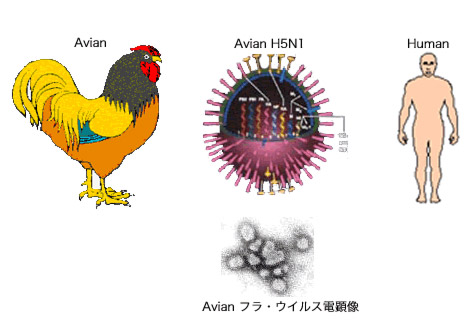
Avian influenza known informally as avian flu or bird flu refers to "influenza caused by viruses adapted to birds."
Avian influenza
It refers to the disease bird flu caused by infection with avian (bird) influenza (flu) Type A viruses. These viruses occur naturally among wild aquatic birds and can infect domestic poultry and other bird and animal species worldwide.
AI viruses are divided into 2 groups based on their ability to cause disease in poultry: low pathogenicity or high pathogenicity.
Avian influenza A (H5N1) and A (H7N9): The A H5N1 virus subtype, a highly pathogenic AI virus, first identified in humans in 1997 during a poultry outbreak in Hong Kong. The A H7N9 virus subtype, a low pathogenic AI virus, first infected in March 2013.
Causes: Work with poultry (such as farmers), touch an infected bird, travel to countries where the virus is present, eating of raw or undercooked poultry meat, eggs, or blood from infected birds.
Symptoms: The H5N1 virus in humans causes typical flu-like symptoms, such as:
Diagnosis:
Treatment:
 In general, treatment with the antiviral medication zanamivir or oseltamivir makes the disease less severe. Need to start taking the medicine within 48 hours after symptoms start for it to work.
In general, treatment with the antiviral medication zanamivir or oseltamivir makes the disease less severe. Need to start taking the medicine within 48 hours after symptoms start for it to work.
 The virus that causes human avian flu is resistant to the antiviral medicines rimantadine and amantadine. These medicines should not be used in the case of an H5N1 outbreak occurs.
The virus that causes human avian flu is resistant to the antiviral medicines rimantadine and amantadine. These medicines should not be used in the case of an H5N1 outbreak occurs.
 Oseltamivir may also be prescribed for persons who live in same home people with avian flu. This prevents them for getting the illness.
Oseltamivir may also be prescribed for persons who live in same home people with avian flu. This prevents them for getting the illness.
Avian, bird, influenza, flu, a h5n1, a h7n9